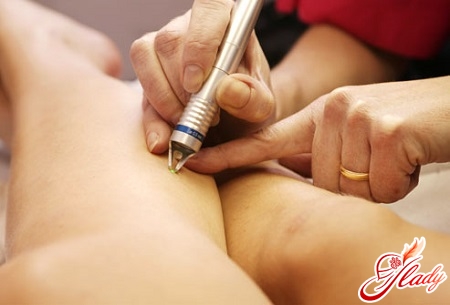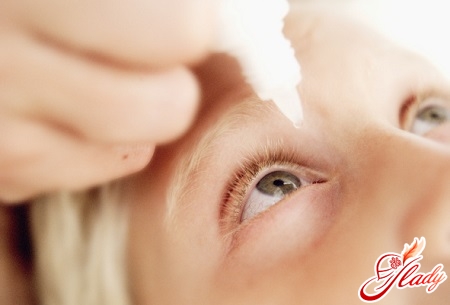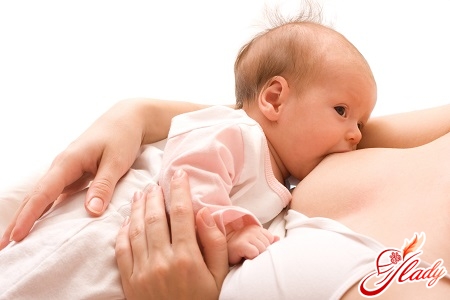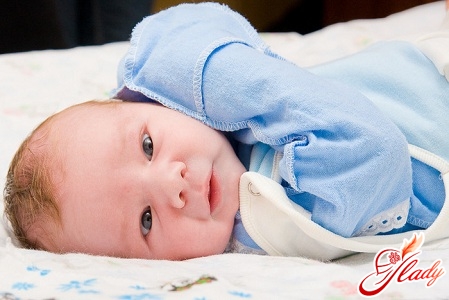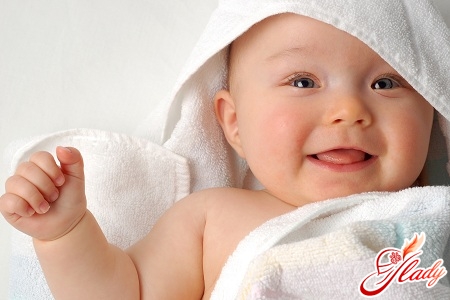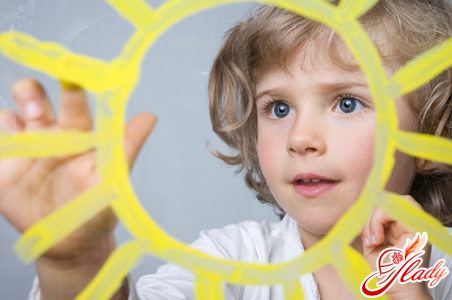
Allergic reactions are common in children.quite often. It can manifest itself with various symptoms: skin rashes, redness, runny nose, sneezing, itching, peeling, watery eyes. To determine how to treat an allergy in a child, it is important to identify its cause. Flower pollen, animal hair, house dust cause respiratory manifestations of allergy, and food and contact allergens - skin. The most common types of allergies in children are atopic dermatitis, food allergy, hay fever.
Atopic dermatitis in children
One of the most common diseases ininfants - this is atopic dermatitis. In common parlance, it is called diathesis. It manifests itself in flaky reddish rashes on the cheeks, arms, legs, bottom of the baby, causing itching. Many doctors believe that hereditary predisposition primarily affects the onset of the disease. And some products, acute and chronic infections, substances that irritate the skin are factors that provoke an exacerbation. In children under two years of age, as a rule, crusts and wet areas form with atopic dermatitis. In older children, cracks, irritation and peeling appear on the skin. In addition, it is difficult for children to hold back when the skin is itchy. Therefore, a bacterial infection gets into the scratches. As a result, secondary inflammation develops. Atopic dermatitis is a seasonal disease. It worsens and is difficult to pass in the cold season and passes more easily in the spring and summer. In order to determine the diagnosis, it is necessary to visit an allergist and a pediatric dermatologist. The attending physician will prescribe the necessary tests: skin tests, blood tests, stool tests. The latter must be checked to find out whether the child has dysbacteriosis. With such a diagnosis, the prescribed ointments and antihistamine drops do not help much, it is necessary to restore the intestinal microflora, reduce the content of pathogenic microorganisms (staphylococcus, yeast fungi, proteus and others). Dysbacteriosis can be caused by antibiotic treatment. Prescribe drugs containing pre- and probiotics. For example, "Linex" can be taken from birth. However, self-medication is unacceptable here. Treatment of atopic dermatitis in children should be comprehensive. Eliminate allergenic products at least for a while. Choose clothes and bedding for the baby only from natural fabrics. Do not overheat the child, make sure there are fewer stressful situations. Use mild hypoallergenic products for skin care. Regularly carry out wet cleaning and ventilation, as household dust causes allergies, sneezing and itching. Avoid contact with animals and birds, as well as with plants that produce pollen. If the child's parents are allergic to something, the risk of an allergic reaction in children increases by 2 times, as the child inherits an excessive immune system reaction to foreign substances from the parents. Remember that the best remedy for allergies is breast milk, as it contains biologically active substances that prevent the development of allergies. Only a nursing mother should follow a hypoallergenic diet.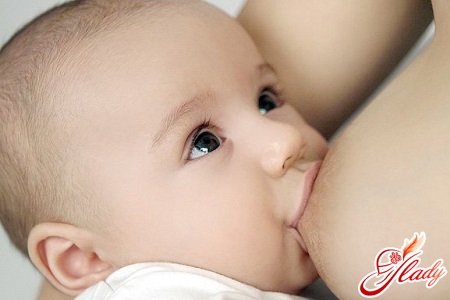
Food allergy and allergen products
At two months, the baby's intestines are still weak and not strong enough.and the gastrointestinal tract is not able to produce antibodies. Therefore, there is a risk of food allergies even in such a baby. If you are breastfeeding, first of all, pay attention to what you eat. Improper nutrition during pregnancy can also cause food allergies in children. Keep a food diary for your child. This is especially important when introducing complementary foods to children. Start with small doses, half a teaspoon of a new product is enough. And observe for a week. If an allergic reaction occurs, do not give this product. You can try it again in a few months. Experts advise starting complementary feeding with single-ingredient purees, especially if there is a tendency to constipation. The child's body absorbs vegetable purees from zucchini, cauliflower, white cabbage, broccoli best. Apple and pear puree are suitable. You should wait with peaches, pumpkin and carrots for children with allergies. If there is no constipation, you can try porridge. Please note that oatmeal and buckwheat contain a strong allergen - the protein gluten. If homemade porridge from these cereals causes an allergy, give preference to store-bought gluten-free porridge. Oddly enough, cow's milk can also be an allergenic product. In this case, cook the porridge in water. As a rule, intolerance to cow's milk protein goes away on its own by 1-2 years. Allergenic products include:
- eggs, fish, caviar, seafood;
- mushrooms, nuts, beans, honey, chocolate;
- carrots, red berries, citrus fruits;
- tomatoes, sour cabbage, spinach;
- smoked sausages, pork liver;
- mayonnaise, vinegar, fermented cheeses.
The following products are permitted to be consumed:
- fermented milk products, mild cheeses;
- rice, buckwheat, oats;
- potatoes, cabbage, greens, zucchini, squash, fresh cucumbers, green varieties of apples, prunes, green pear;
- bread with bran, white, unhealthy;
- apple marmalade, marshmallow, pastille, steam and boiled beef;
- rabbit, turkey.
Doctors have identified cases where the cause is allergieshas become overfeeding the child with some product, although it was previously well tolerated by the child's body. Choose natural products that do not contain food additives that provoke allergies. Treatment of food allergies consists of eliminating the allergen product, prescribing antihistamines and enterosorbents (agents that bind the allergen and remove it from the body).
Pollinosis, or allergy to pollen
Hay fever is an allergic disease,caused by increased sensitivity to pollen, which gets on the mucous membranes and causes inflammation. This disease manifests itself as rhinitis and conjunctivitis. In Russia, there are three periods of exacerbation of pollinosis:
- spring (April-May) - flowering trees (oak, birch, alder, hazel);
- summer (June-July) - flowering of cereal grasses (wheatgrass, timothy, bluegrass, fescue, foxtail and others);
- late summer - early autumn - flowering of amaranth and composite plants (wormwood, quinoa, ragweed and others).
To determine which plant caused theallergic reaction, consult an allergist. The most popular drugs used to treat different types of allergies in children: Fenistil gel and drops from 1 month, Zyrtec from 6 months, Lokoid gel as prescribed by a doctor (hormonal drug).




